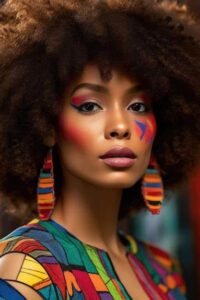Bold and Beautiful Fashion
1. Introduction
Bold and Beautiful Fashion: The Ultimate Guide to Fearless Style in a world where trends shift as swiftly as the seasons, bold and beautiful fashion stands out as a timeless declaration of individuality and empowerment. It invites us to step outside our comfort zones, embrace our uniqueness, and express our inner creativity through what we wear. In this article, bold and beautiful fashion we embark on a vibrant journey through the many dimensions of bold and beautiful fashion .In the same way Bold and Beautiful Fashion – A Journey Through Iconic Trends from historical revolutions to cultural celebrations, from daring designs to subtle statements, we explore how fashion continues to shape and reflect who we are and who we aspire to be.
2. Evolution of Bold Fashion Through the Decades
A. The Roaring Twenties to Swinging Sixties
Breaking Societal Norms
The 1920s saw the rise of flappers—women who defied traditional gender roles by cutting their hair short, wearing shorter hemlines, and embracing jazz culture. Their style was a bold statement of independence, challenging the conservative fashion norms of the Edwardian era. Fashion icons like Coco Chanel revolutionized women’s fashion by popularizing trousers, relaxed fits, and sporty chic attire, signaling the start of a new age of boldness.
As the decades progressed, the 1960s welcomed a youthquake that redefined style standards. Eventually Think mini skirts, go-go boots, and psychedelic prints. Thus Designers like Mary Quant pushed the boundaries of acceptable fashion, and fashion became a means for young people to rebel and stand out.
B. The Boldness of the 1970s and 1980s
The Rise of Flamboyance and Rebellion
In contrast moving into the 1970s, fashion embraced a wide array of bold statements: bell bottoms, platform shoes, fringe, sequins, and gender-fluid silhouettes. This was an era of cultural exploration and political activism, reflected in everything from disco glam to punk rock rebellion. In addition artists like David Bowie blurred gender lines with bold outfits that redefined traditional ideas of masculinity and femininity. For instance The era of power dressing introduced shoulder pads, vivid prints, and luxurious excess. Fashion in this decade was about being seen and being loud—a perfect reflection of a time marked by ambition, consumerism, and visual spectacle.
C. Fashion Transitions: 1990s to 2000s
Minimalism vs. Extravagance
Furthermore Influenced by designers like Calvin Klein and Helmut Lang, this era found boldness in simplicity—slip dresses, muted tones, and sleek tailoring reigned supreme. Streetwear, grunge, and hip-hop fashion introduced a new, rebellious edge to mainstream style. Baggy jeans, oversized flannel shirts, and statement sneakers became cultural markers of youth identity. Therefore Transitioning into the 2000s, fashion became more experimental and eclectic. On the other hand pop culture took center stage as celebrities like Britney Spears, Beyoncé, and Lady Gaga made bold style choices essential to their brand.
D. 2010s to Present: The Era of Individuality
Diversity and Self-Expression
However With the arrival the bold and beautiful fashion of the 2010s, fashion took a revolutionary turn toward diversity and self-expression. Social media platforms like Instagram and Tik Tok democratized style, giving rise to micro-trends and niche aesthetics. As a result today, bold and beautiful fashion is less about shock value and more about authenticity. Fashion now celebrates the story behind the style—your roots, values, and personality woven into every stitch

0kf5hu